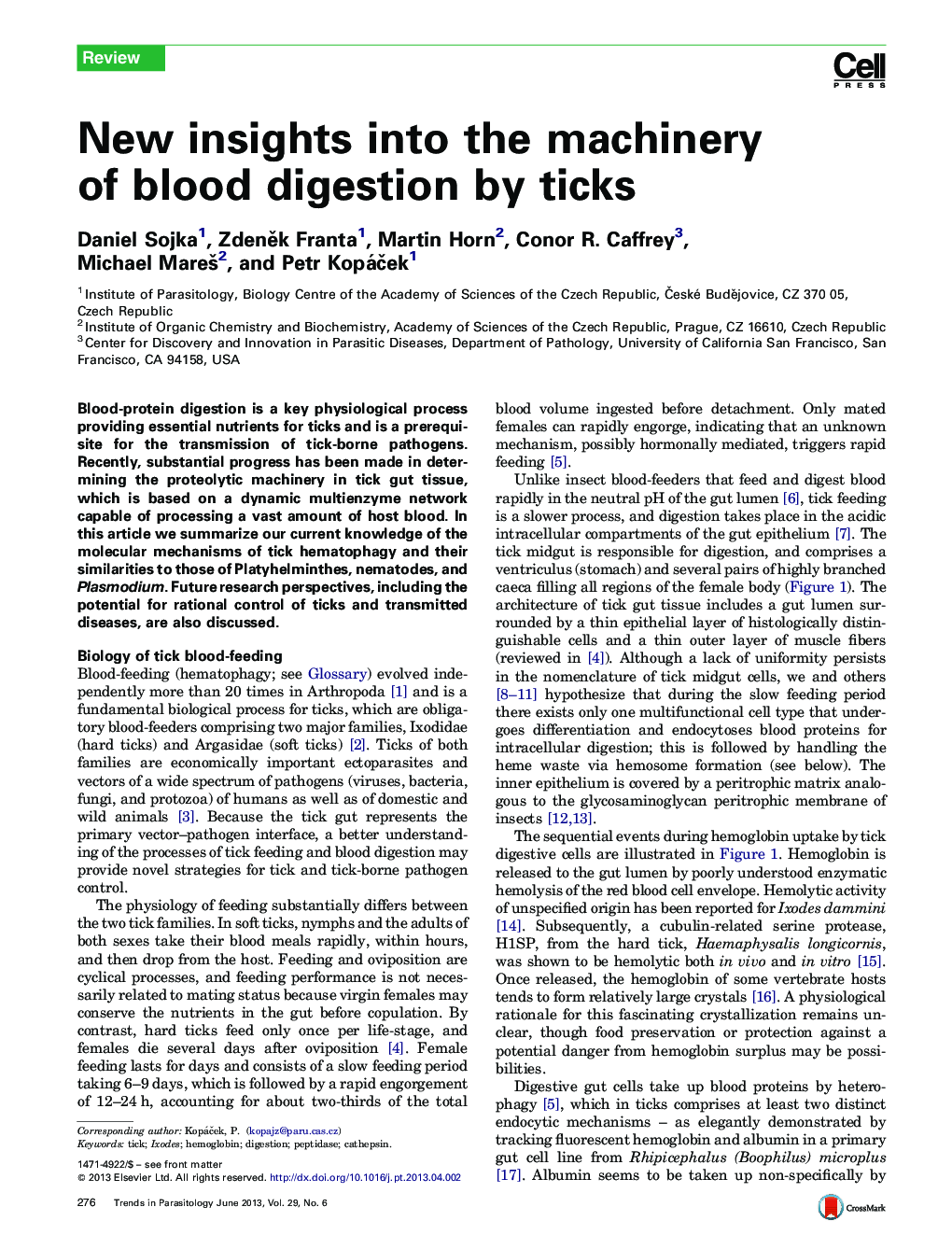| Article ID | Journal | Published Year | Pages | File Type |
|---|---|---|---|---|
| 3423177 | Trends in Parasitology | 2013 | 10 Pages |
•Ticks digest blood intracellularly by a multi-enzyme system of cysteine and aspartic proteases.•A similar proteolytic machinery is employed by evolutionarily distant hematophagous parasites.•Tick digestive system offers new targeted strategies to control ticks and tick-borne diseases.
Blood-protein digestion is a key physiological process providing essential nutrients for ticks and is a prerequisite for the transmission of tick-borne pathogens. Recently, substantial progress has been made in determining the proteolytic machinery in tick gut tissue, which is based on a dynamic multienzyme network capable of processing a vast amount of host blood. In this article we summarize our current knowledge of the molecular mechanisms of tick hematophagy and their similarities to those of Platyhelminthes, nematodes, and Plasmodium. Future research perspectives, including the potential for rational control of ticks and transmitted diseases, are also discussed.
